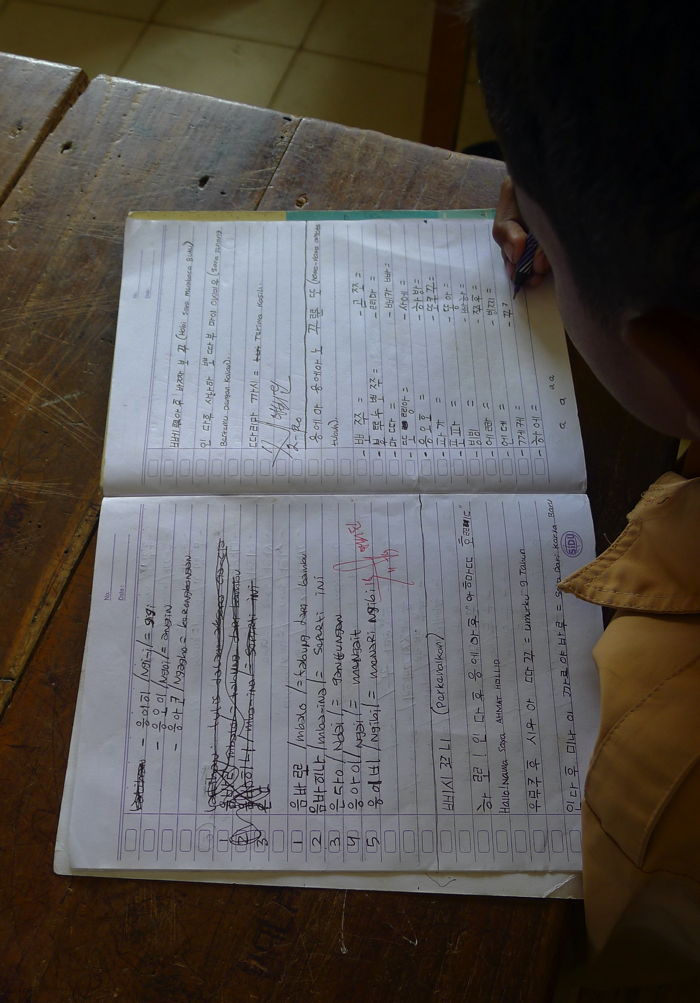- Project Leader : Kim Hyojin (Waseda University, Graduate School of Letters, Arts and Sciences)
Outline of Research
The Cia-Cia Laporo (hereafter “the Cia-Cia”) ethnic minority group on Buton Island in southeast Sulawesi in the Republic of Indonesia uses Hangeul (the Korean alphabet) as a script in teaching its ethnic language. The purpose of this study is to clarify how Hangeul was introduced and implemented as a borrowed new script in Buton society as well as to examine its impacts on the Cia-Cia local community. Furthermore, because the Cia-Cia people have maintained their history primarily through an oral tradition, much has been lost; the study aims to use historical materials to fill in the gaps that underlay the memories of the Cia-Cia regarding their origin and history in an effort to support their ethnic history telling.
Description
Numerous ethnic languages in Indonesia have become extinct, or are threatened and endangered. This is a study of the Cia-Cia, an ethnolinguistic minority who lives in the Sorawolio sub-district of Baubau City on Buton Island. In July 2009, following the recommendation of a Korean nonprofit organization, the Cia-Cia began to use a Hangeul-derived script to learn their own ethnic language. The Cia-Cia: Hangeul script was thus born out of the NGO’s ambitions to globalize Hangeul together with expectations of Baubau’s mayor of the economic benefits that could accom- pany the use of Hangeul. Since 2009, the Cia-Cia has called the script “our writing system” and experimented with various modifications of it.
Geographically and demographically, this new “Hangeul adopter” constitutes an ethnic minority with a population of about 4,900 people that has settled down in the forest of Sorawolio. Introduction of the Hangeul script brought with it knowledge, culture, and people from the “outside,” which have been influencing the Cia-Cia local community in various aspects.
Now in its tenth year of ethnic language education among the Cia-Cia, the “Cia-Cia: Hangeul” script thus far has been studied intensively by linguists and grammatologists, but political scientists have tended to focus their research on the consequences of local autonomy and decentralization in modern-day political history. Therefore, there is a dearth of studies focusing on the sociocultural role of Cia-Cia: Hangeul, such as an analysis of the positive and negative impacts caused by its introduction.
This study examines the script from a cultural perspective, discussing the background of its introduction, development, and influence in association with the changes seen in Cia-Cia society. In so doing, the study will uncover the ethnicity “rebuilding” or “reconstruction” activities of the Cia-Cia people as they begin to “speak for themselves,” thereby overcoming the “sealed past” of their status as members of a slave class in the Buton Kingdom. It will also review available literature on the origin and history of the Cia-Cia under the rule of the Buton Kingdom to fill in the gaps that underlay their memories and oral tradition by using historical materials. By considering the Cia-Cia’s attempt to preserve their ethnic language through the use of the foreign Hangeul script as a subconscious act of resistance, we may be able to better appreciate some of their fundamental aspirations.


